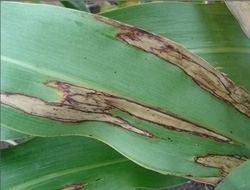

Aphelenchoides, a disease of rice, is provoked by Aphelenchoides besseyi.

The disease is expressed in the deformation of leaves, swelling of petioles, and the appearance of dark spots on tubers. Fusiform thickening of the stems is provoked by stem worms.Common Nematode Diseasesĭiseases directly depend on the type of nematodes: Therefore, farmers should identify crop disease in the field to save the affected plants timely and prevent the disease from spreading. Other crop diseases symptoms include:Īlthough nematodes need a long period to cause significant damage to a plant, they spread exceptionally rapidly. Also, crop diseases caused by fungi can interfere with the average growth or contribute to its abnormal burst, called hypertrophy. Often, a fungal infection is expressed in local or general necrosis. Also, fungal spores are often carried by gusts of wind. Like bacterial crop diseases, these infections affect plants mainly through wounds, stomata, and water pores. In this regard, this problem is severe both from a humanitarian and economic point of view. “The Still Underestimated Problem of Fungal Diseases Worldwide.” Frontiers in microbiology vol. According to research, this plant disease type destroys about a third of all food crops Almeida, Fausto et al. Pathogenic fungi are the most typical agricultural problem.

Of course, sanitary measures are imperative, which include weed control, sterilization of tools, proper waste disposal, and avoidance of cultivation under conditions when leaves are wet. Preventive measures may include using pathogen-free seeds produced in drought-prone regions, hot water for seed treatment, soil solarization, control of plant diseases with germicidal compounds of seeds.Īlso, crop diseases can be prevented by spraying. It is complicated to control bacterial diseases of crop plants for several reasons: high spreading rate and protection from exposure to chemicals due to being inside the plants. Wildfire of tobacco is widespread in the world and shows itself as yellowish-green spots on leaves.Fire blight symptoms include necrotic weeping ulcers, wilting and rolling of leaves, while the dried parts of a plant do not fall off.Granville wilt exposes itself in growth retardation, wilting of the high culture’s part, and the death of roots.Here are some examples of the most common diseases of crop plants: Common Bacterial DiseasesĪs noted earlier, due to a huge number of bacteria, there are many disease types. The main bacterial disease indications include vascular wilting, necrosis, soft rot and tumor.Īlthough this type of plant disease can be identified due to its pronounced symptoms, identifying a specific causal agent requires laboratory methods. First of all, significant temperature fluctuations and high levels of humidity act as catalysts for bacterial activity. But bacteria can also infect plants through natural holes or glands (for example, which secrete nectar).Īnother feature of bacterial crop diseases is that causal agents, once in a plant or soil, can remain dormant for a long time until favorable conditions arise for them. It occurs mainly through damaged areas, such as caused by agricultural tools, insects (fleas), or simply unfavorable weather conditions (dust, wind, heavy rain). To infect the causal agent needs to get into the culture’s tissue. In this regard, the prevention and control of this kind of disease are pretty tricky. Crop Diseases Caused By BacteriaĪmong the most common infections in agriculture are crop diseases caused by bacteria. We will consider relevant crop diseases and their causative agents in the following sections. Toxins that some embryophytes (higher plants) and fungi release into the soil can also be causal agents of crop diseases. These examples prove the importance of sustainable agriculture not only for protecting the environment but also for a profitable business.Įven an unfavorable light regime can cause negative consequences, especially for plants produced in greenhouses. The latter factor is often the result of poor-quality treatment of fields with some herbicides. Usually, the unhealthy physicochemical composition of the soil is the disease source. They can accumulate due to the presence of nearby chemical or metallurgical plants. Also, diseases are usually caused by harmful impurities in the air.

Examples are low or high temperature, excess, or lack of moisture. Unfavorable environmental conditions often generate non-communicable diseases. Traditionally, there are several types of crop disease: abiotic (also known as non-infectious) and biotic (infectious). Hide Types Of Crop Diseases & Their Causal Agents


 0 kommentar(er)
0 kommentar(er)
